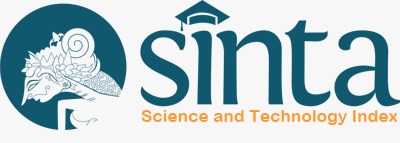EEG-Based Depression Detection in the Prefrontal Cortex Lobe using mRMR Feature Selection and Bidirectional LSTM
DOI:
https://doi.org/10.31937/sk.v15i2.3426Abstract
Depression can induce significant anguish and impair one's ability to perform effectively in professional, academic, and familial settings. This condition has the potential to result in suicide. Annually, the number of deaths resulting from suicide exceeds 700,000. Among individuals aged 15-29, suicide has emerged as the fourth most prevalent cause of mortality. Challenges in treating depression include limited accessibility to mental health care in rural regions and misdiagnosis resulting from subjective evaluations, wherein insufficient expertise can contribute to inaccurate diagnoses. Electroencephalography (EEG) has gained popularity as a tool for the identification and study of a number of mental illnesses in the past several years. Therefore, an automated technique is required to precisely distinguish between normal EEG signals and depression signals. This research focused on developing an EEG-based depression detection system in the prefrontal cortex lobe area (Fp1, Fpz, and Fp2). One of the developments carried out in this research is the implementation of Bidirectional Long Short-Term Memory (Bi-LSTM) as the model classification and minimum redundancy maximum relevance (mRMR) feature selection. Results suggest that the combination of mRMR feature selection with 25 features and the Bidirectional LSTM obtained 92.83% for the accuracy.
Downloads
Downloads
Published
How to Cite
Issue
Section
License
Authors retain copyright and grant the journal right of first publication with the work simultaneously licensed under a Creative Commons Attribution-ShareAlike International License (CC-BY-SA 4.0) that allows others to share the work with an acknowledgment of the work's authorship and initial publication in this journal.
Authors are able to enter into separate, additional contractual arrangements for the non-exclusive distribution of the journal's published version of the work (e.g., post it to an institutional repository or publish it in a book), with an acknowledgment of its initial publication in this journal.
Copyright without Restrictions
The journal allows the author(s) to hold the copyright without restrictions and will retain publishing rights without restrictions.
The submitted papers are assumed to contain no proprietary material unprotected by patent or patent application; responsibility for technical content and for protection of proprietary material rests solely with the author(s) and their organizations and is not the responsibility of the ULTIMA Computing or its Editorial Staff. The main (first/corresponding) author is responsible for ensuring that the article has been seen and approved by all the other authors. It is the responsibility of the author to obtain all necessary copyright release permissions for the use of any copyrighted materials in the manuscript prior to the submission.















